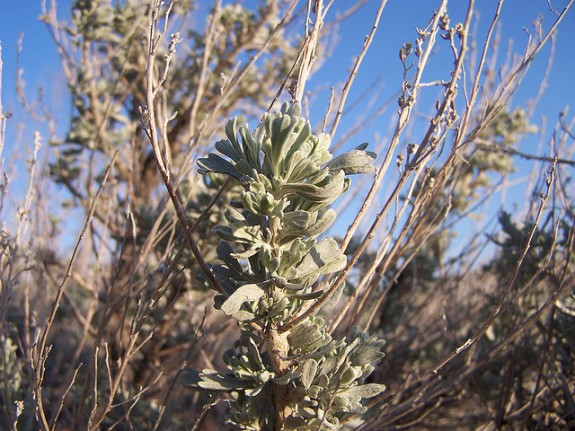Not Only Can Plants Talk to Each Other, They Listen More Closely to Their Relatives
Plants speak with chemical cues, and they listen more carefully to their close relatives

This sagebrush only looks after its own. Photo: Bryant
Far from being static sprouts, plants actually seem to live vibrant, communicative lives. By emitting various chemicals—or even, says io9, audibly clicking—plants trade information about their surroundings, emitting “cries for help, invitations, even warnings, each in the form of odor molecules that float past human noses unnoticed.”
Researchers, said Discover in a 2002 feature,
have already discovered that plants can send chemical cues to repel insect enemies, as well as signals that attract allies—other insects that are pleased to eat the insects eating the plant. But that is only the start of a more complex scenario, for Baldwin and others have also found that nearby plants can listen in to this conversation and gear up their own defenses.
In a new study by University of California, Davis entomologist Richard Karban and colleagues, says New Scientist, the scientists found that plants—in this case, big sagebrush—don’t just listen in on each others’ conversations, they pay more attention to the plants most closely related to them.
At the start of three growing seasons, Karban’s team exposed different branches of the same plants to volatile chemicals. The substances came from relatives of the same species whose leaves had been clipped to trigger chemical release.
By the end of the seasons, herbivores had done less damage to the branches exposed to chemicals from close relatives than to those receiving signals from more distant relatives – the warning probably prompting the plants to release herbivore-deterring chemicals, says Karban.
Different individual sagebrush plants emit slightly different warning chemicals, says New Scientist, and the listeners heed the warning cries of their relatives more than those of unrelated plants.
More from Smithsonian.com:
/https://tf-cmsv2-smithsonianmag-media.s3.amazonaws.com/accounts/headshot/smartnews-colin-schultz-240.jpg)
/https://tf-cmsv2-smithsonianmag-media.s3.amazonaws.com/accounts/headshot/smartnews-colin-schultz-240.jpg)